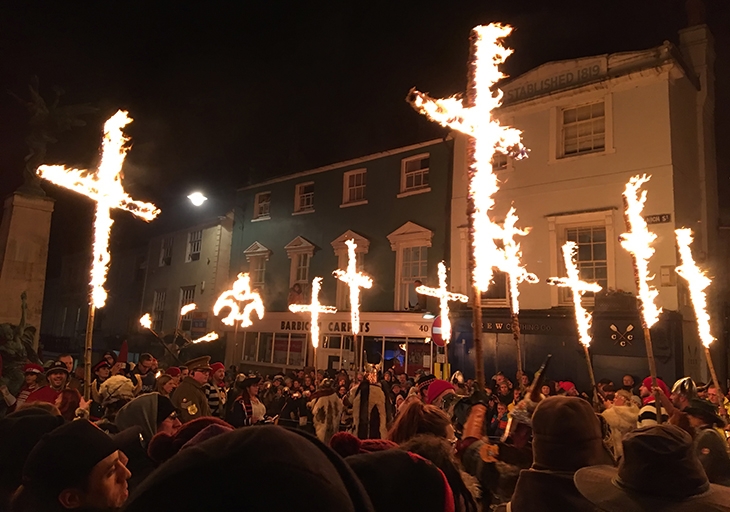Autumn is upon us, and the streets are full of families in fancy dress. People of all ages are dressing up, everything from smugglers to suffragettes. In Lewes it can only mean one thing — it’s bonfire time again.
Elsewhere in Britain, Bonfire Night has been overwhelmed by Halloween, but here in the historic county town of Sussex (forget about this newfangled East Sussex nonsense), Guy Fawkes is still going strong. This is no tame firework display, organised and sanctioned by the council. It’s a celebration of local kinship — half a dozen bonfires, one in each part of town, each with its own loyalties and rituals. These rituals stretch back centuries: 17 burning crosses commemorate the 17 Protestant martyrs burnt here by Bloody Mary; Pope Paul V (1552-1621) is burnt in effigy every year, alongside modern villains like Vladimir Putin.
While so many market towns are being swallowed up by the commuter belt, how has Lewes retained its identity? I reckon it goes back to Tom Paine. Paine wrote his first political pamphlet here, in a handsome old house on the high street, and aired his radical ideas at the Headstrong Club, which met in the White Hart Hotel (still a lively place).
Lewes has always been -nonconformist, and that independent spirit endures. Unlike many a bland dormitory town, it has resisted the remorseless invasion of the chain stores. Edward Reeves, Britain’s oldest photographic studio, has occupied the same premises since 1855. Malcolm Rose makes harpsichords in a beautiful oak-beamed building that dates back to the 16th century. Harveys have been brewing beer on the same site for 200 years.
Lately, Lewes has become a magnet for arty folk who can’t afford a family home in London or who find Brighton a bit grungy, but its industrial heritage has saved it from cutesy atrophy.








Comments
Join the debate for just £1 a month
Be part of the conversation with other Spectator readers by getting your first three months for £3.
UNLOCK ACCESS Just £1 a monthAlready a subscriber? Log in